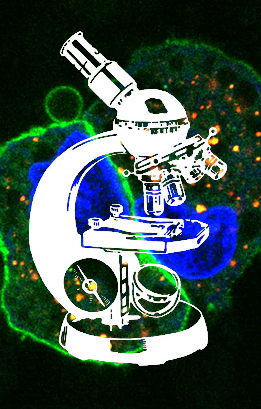New 'scope spots live molecules
 A new kind of microscope can track the position and orientation of individual molecules in living cells.
A new kind of microscope can track the position and orientation of individual molecules in living cells.
A report this week in the Proceedings of National Academy of Sciences says the “instantaneous fluorescence polarization” microscope offers new insights into how cells achieve key functions and forces.
The microscope has been designed and tested at the Woods Hole Marine Biological Laboratory (MBL) in the US.
“All functions of cells are directed. For example, cells move in a specific direction or divide at a certain site and orientation so the two daughter cells are the right size,” says Dr Shalin Mehta, leader of the latest demonstration study.
Understanding how cellular components work requires watching them at the nanoscale – tracking the activity of molecules just billionths of a metre in size.
“With this microscope, we can see the orientation of a single molecule, or an assembly of molecules as they form a higher-order structure,” says corresponding author Tomomi Tani, an MBL associate scientist.
The scope can even detect minute conformational changes that are required for a protein’s function.
It is the latest generation in a long line of polarised light microscopes, which exploit “a property of light not visible to the human eye to measure molecular order below the resolution limit of the microscope,” Mehta explains.
In the video below, fluorescent particles move along treadmills of actin filaments in a human skin cell.
The images were added along the polarization dimension to compute total fluorescence intensity, while also displaying on the right the orientation of actin filaments at the location of each fluorescent particle, which was computed from polarization-resolved images and is shown by the magenta line.








 Print
Print